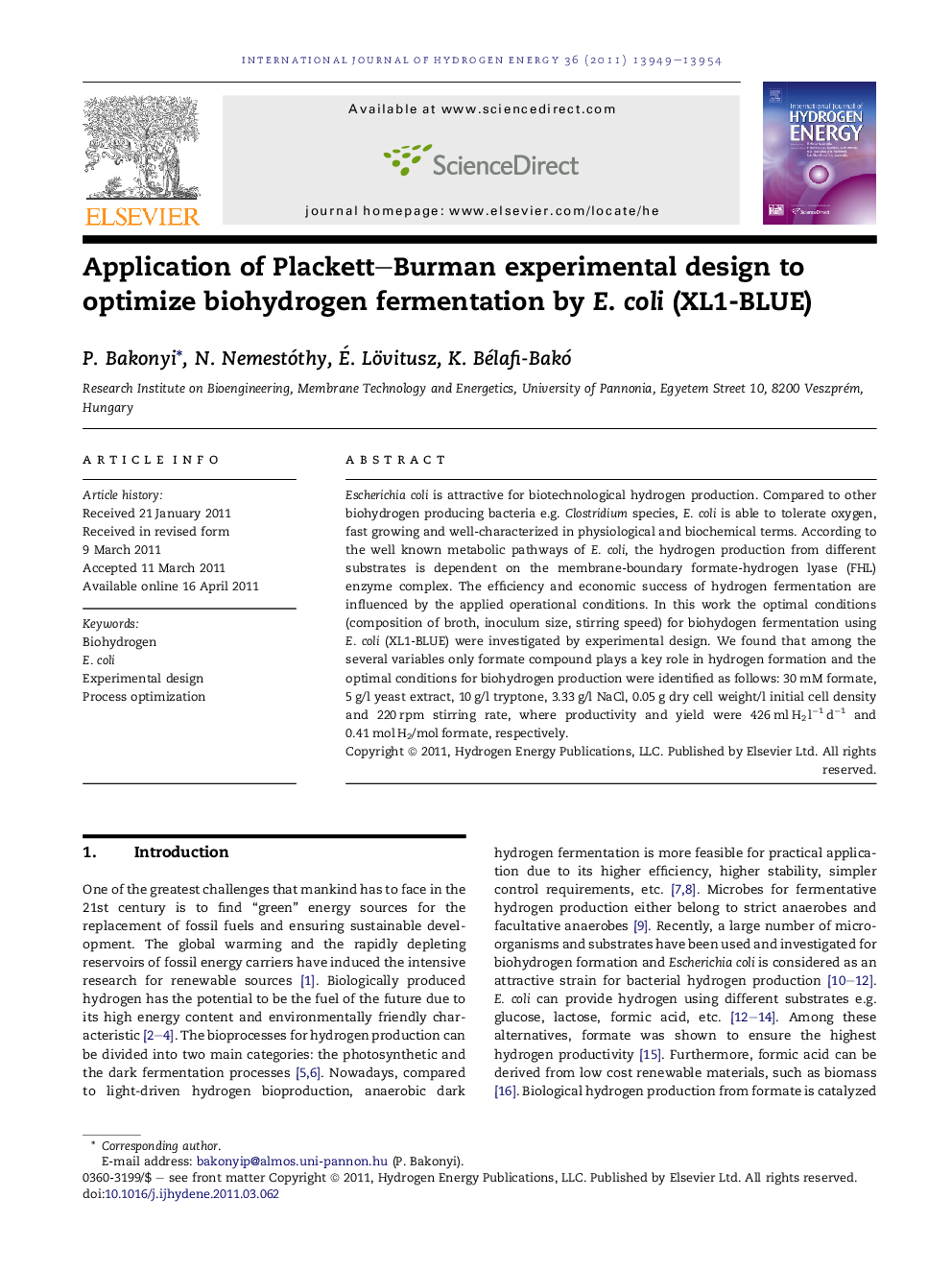| Article ID | Journal | Published Year | Pages | File Type |
|---|---|---|---|---|
| 1278748 | International Journal of Hydrogen Energy | 2011 | 6 Pages |
Escherichia coli is attractive for biotechnological hydrogen production. Compared to other biohydrogen producing bacteria e.g. Clostridium species, E. coli is able to tolerate oxygen, fast growing and well-characterized in physiological and biochemical terms. According to the well known metabolic pathways of E. coli, the hydrogen production from different substrates is dependent on the membrane-boundary formate-hydrogen lyase (FHL) enzyme complex. The efficiency and economic success of hydrogen fermentation are influenced by the applied operational conditions. In this work the optimal conditions (composition of broth, inoculum size, stirring speed) for biohydogen fermentation using E. coli (XL1-BLUE) were investigated by experimental design. We found that among the several variables only formate compound plays a key role in hydrogen formation and the optimal conditions for biohydrogen production were identified as follows: 30 mM formate, 5 g/l yeast extract, 10 g/l tryptone, 3.33 g/l NaCl, 0.05 g dry cell weight/l initial cell density and 220 rpm stirring rate, where productivity and yield were 426 ml H2 l−1 d−1 and 0.41 mol H2/mol formate, respectively.
